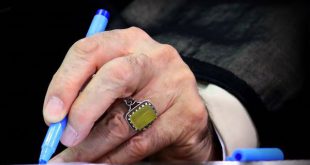This paper will examine the historical study of Shi͑ism in Western Academia.
It will argue that until the last four decades, Western scholarship studied Shi͑i Islam primarily through a Sunni lens. It will also show that since the 1980s, various socio-political factors like the Islamic revolution in Iran, the emergence of Ḥizbullāh in Lebanon and the American invasion of Iraq forced Western scholars to look at Shi͑ism in a different light. Consequently, they explored different facets of Shi͑ism ranging from the Shi͑i concept of centralized authority during the occultation of the Imam to Shi͑i liturgies, rituals and Shi͑i political theory.
Until fairly recently, Western scholarship on Shi’ism was predicated through a Sunni lens. The dearth of primary Shi’i sources that affected research up to the second half of the twentieth century contributed to the lack of academic understanding on the history, law, and doctrines of Shi’ism. As Frederick Denny states:
Islamic studies in the West and in the greater part of the Islamic world itself have long shared a bias that Sunni Islam is the nor‑mative tradition, whereas Shi’ism is at best heterodoxy and at worst heresy […]. This myth of the silent center has given Sunnis a sense of being heirs to a providential dispensation in ruling most Muslim domains, even where, as in Iraq and Lebanon, ShiÝites comprise a major part of the population.
Bibliographic Information
Title: The Study of Shia Islam in Western Academia
Author: Liyakat Takim
Published in: Journal of Shi’a Islamic Studies, Volume 9, Number 1, Winter 2016
Language: English
Length: 21 pages
 Ijtihad Network Being Wise and Faithful Muslim in the Contemporary World
Ijtihad Network Being Wise and Faithful Muslim in the Contemporary World

